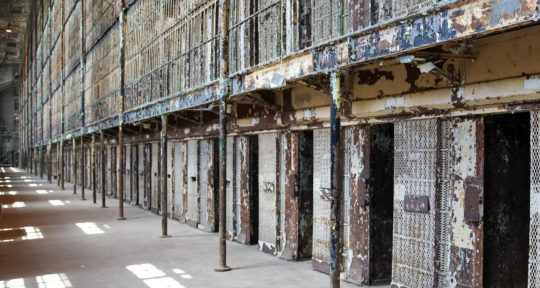Used in traditional healing ceremonies across multiple Native American cultures, a hoop—which has no distinct beginning or end—symbolizes the circle of life. According to the Heard Museum in Phoenix, Arizona, modern hoop dancing was “developed and perfected by Tony Whitecloud, who created a performance program for the tourism industry using willow hoops to form shapes and designs while dancing to intertribal music.”
Today, dancers compete annually at the museum’s World Championship Hoop Dance Contest using between four and 50 hoops. They are judged according to five elements: precision, timing and rhythm, showmanship, originality, and speed. Competing by age group, but not by gender identity, dancers from various Indigenous communities combine athleticism and artistry, crafting creative routines that are as unique as the cultures they represent.
In 2022, Shadé Phea Young (Navajo/Hopi/Tewa) was named Heard Hoop Dance Contest Teen Champion. Young was raised in a family of hoop dancers, and also plays volleyball, basketball, and softball. She says that she’s not a competitive person, but she likes a challenge; hoop dancing also offers her an opportunity to connect with her ancestors’ traditions. “Hoop dancing was originally a healing ceremony, so when we dance we don’t only bring strength to ourselves, but to others as well,” Young says.
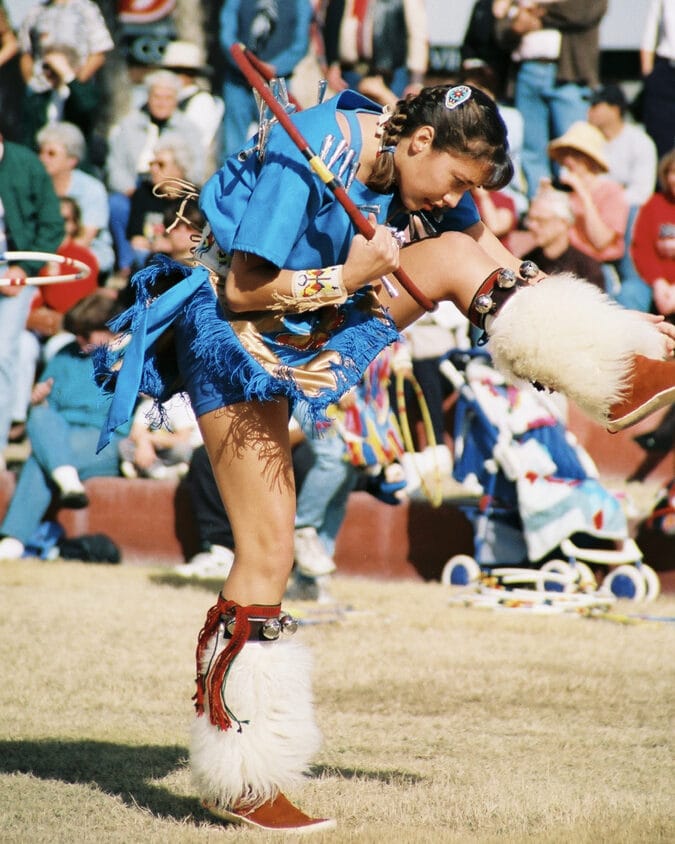
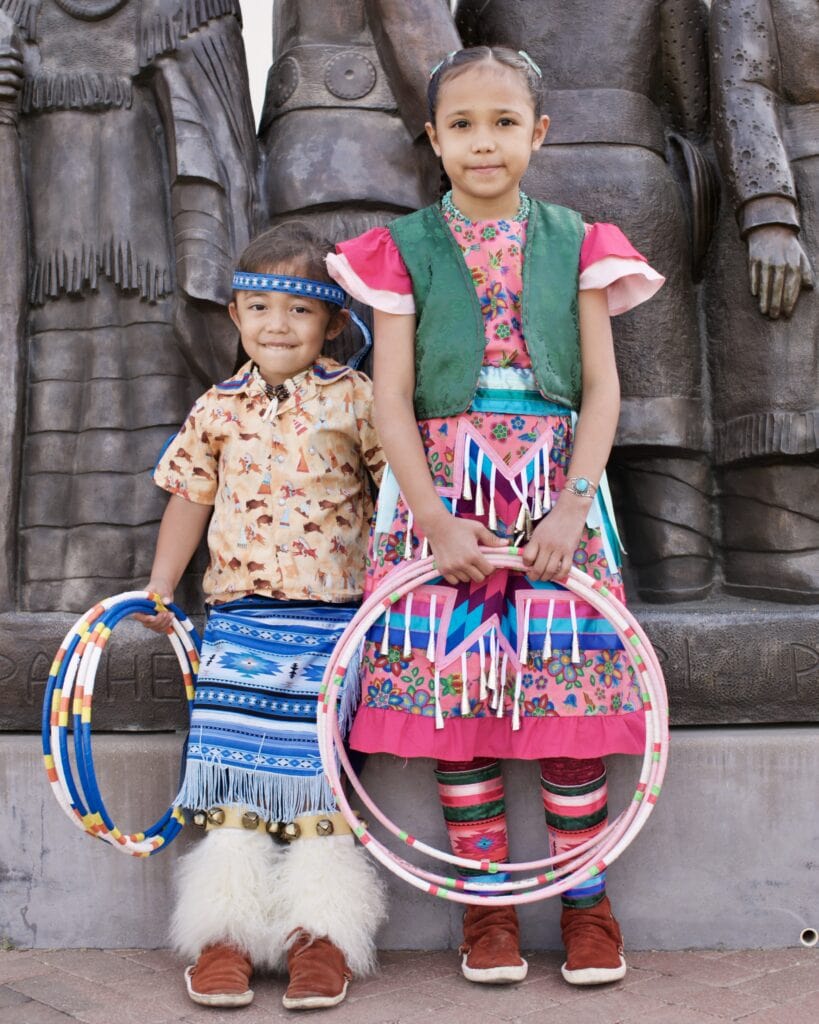
In 1997, Ginger Sykes Torres was only 16 when she became the first female contestant to win a championship title; she says she would have liked to continue dancing, but stopped competing after the physical challenges of becoming a mother. Although she hung up her hoops, two of her three young children competed this year—and Sykes Torres never stopped trying to break through barriers. She’s currently running to represent Arizona’s 1st Congressional District; if she wins, she would be the first Native American to represent the state at a federal level. “Setting myself up in an uncomfortable position to be a leader back then was definitely an experience that has helped what I’m doing now,” she says.
Although its roots stretch back much farther, the first World Championship Hoop Dance Contest was held in 1991 at the New Mexico State Fair in Albuquerque. A year later, the event moved to the Heard Museum, the mission of which is “Advancing American Indian Art.” After going virtual in 2021 due to the COVID-19 pandemic, the competition returned for a 32nd year to the museum’s Libby Amphitheater on a sunny and hot day in late March this year.
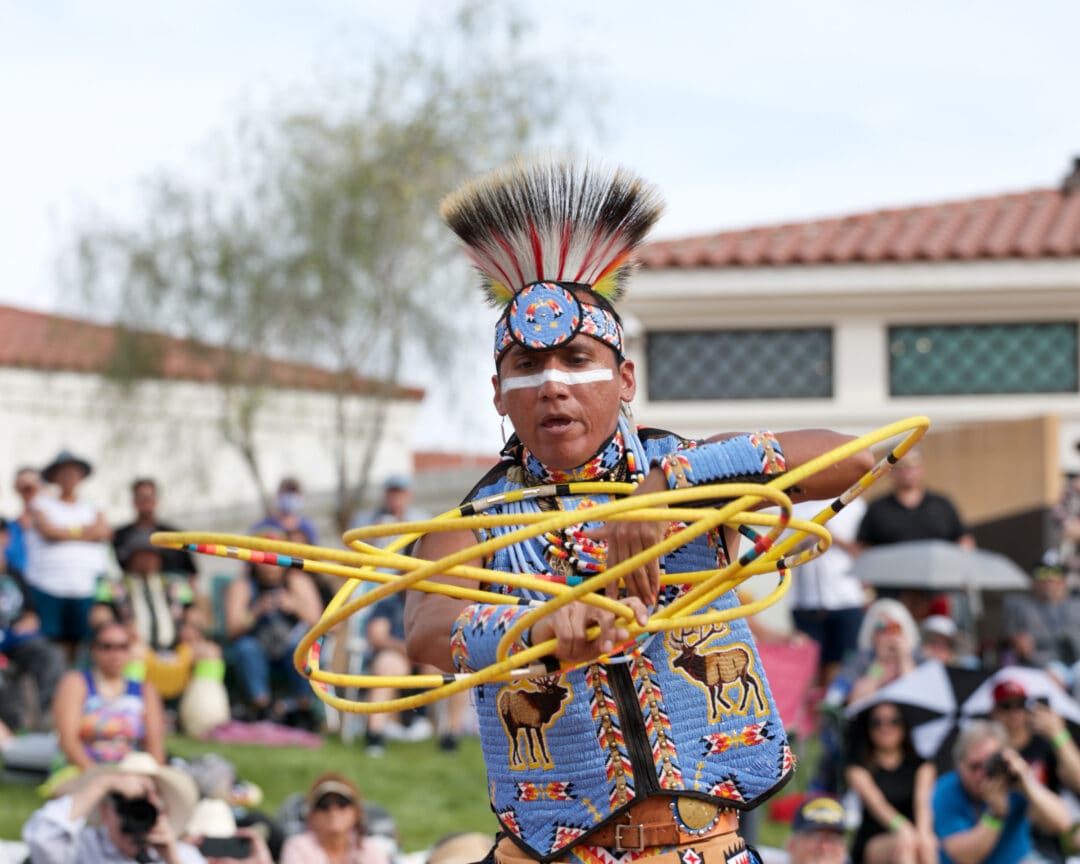
Tony Duncan (San Carlos Apache/MHA Nations), is the 2011 and 2021 (virtual) Heard Hoop Dance Contest Adult World Champion. This year, Duncan, a resident of Mesa, Arizona, was the Adult Division Third Runner Up.
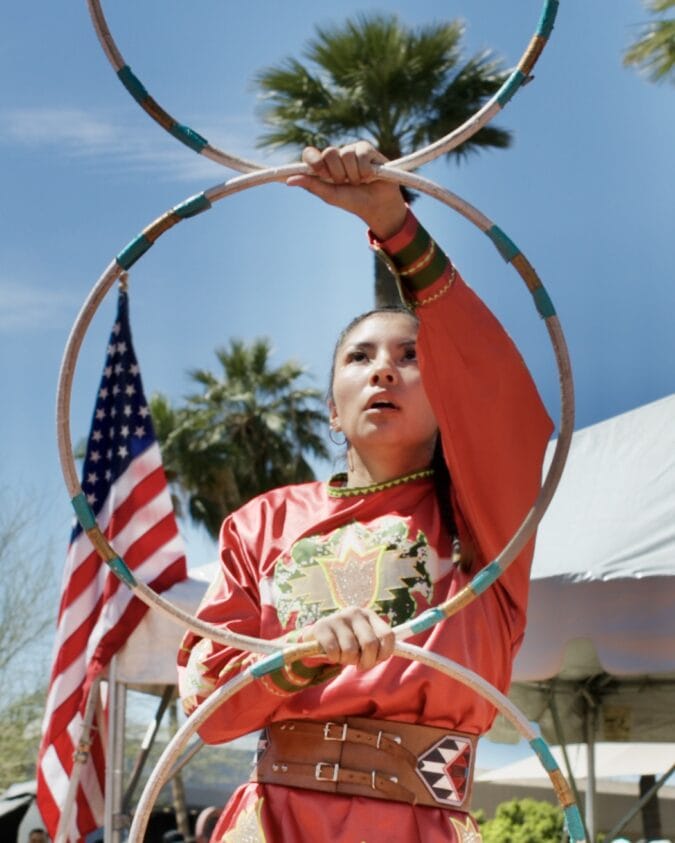
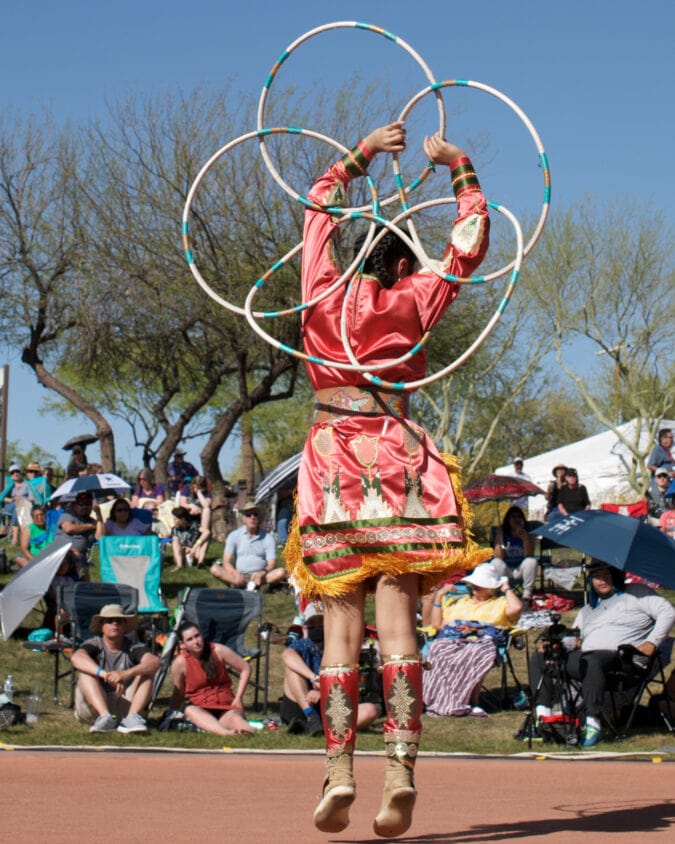
Young is the 2022 Heard Hoop Dance Contest Teen World Champion. The 17-year-old athlete is a high school junior in Santa Fe, New Mexico. Each dancer creates unique designs and tries to tell a story with their hoops. “Hoop dance is very beautiful,” she says.
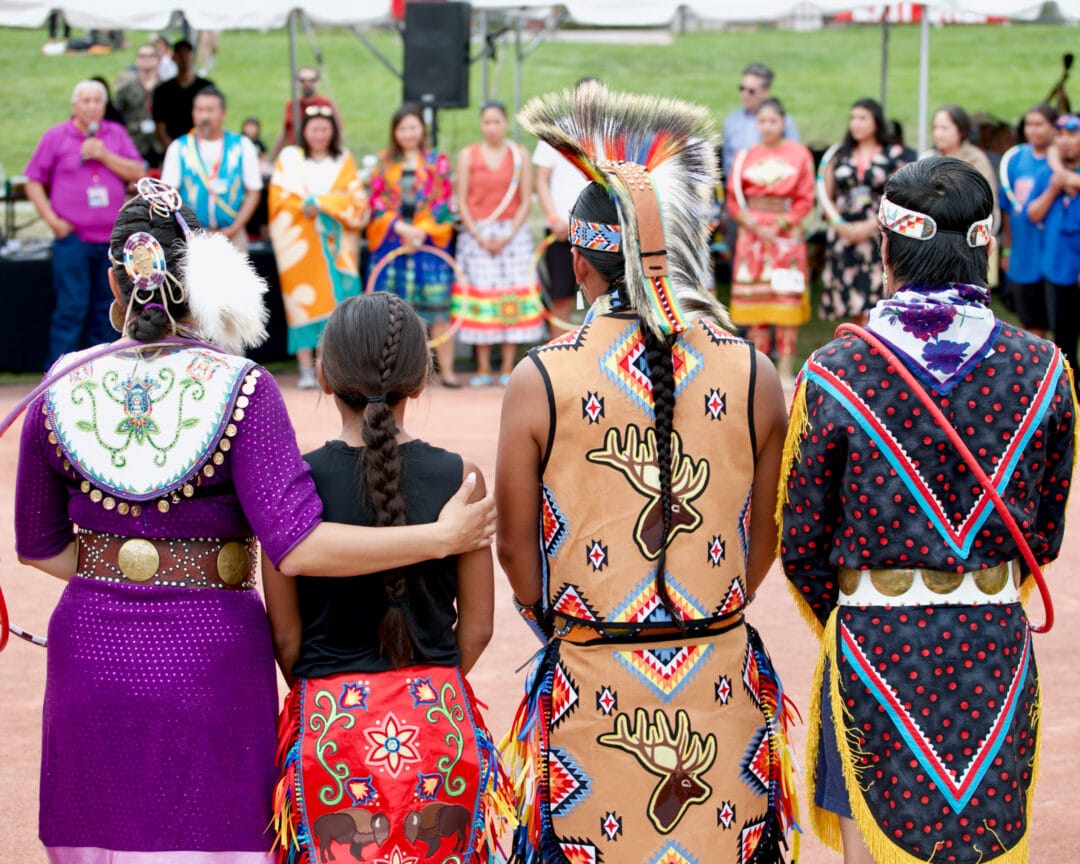
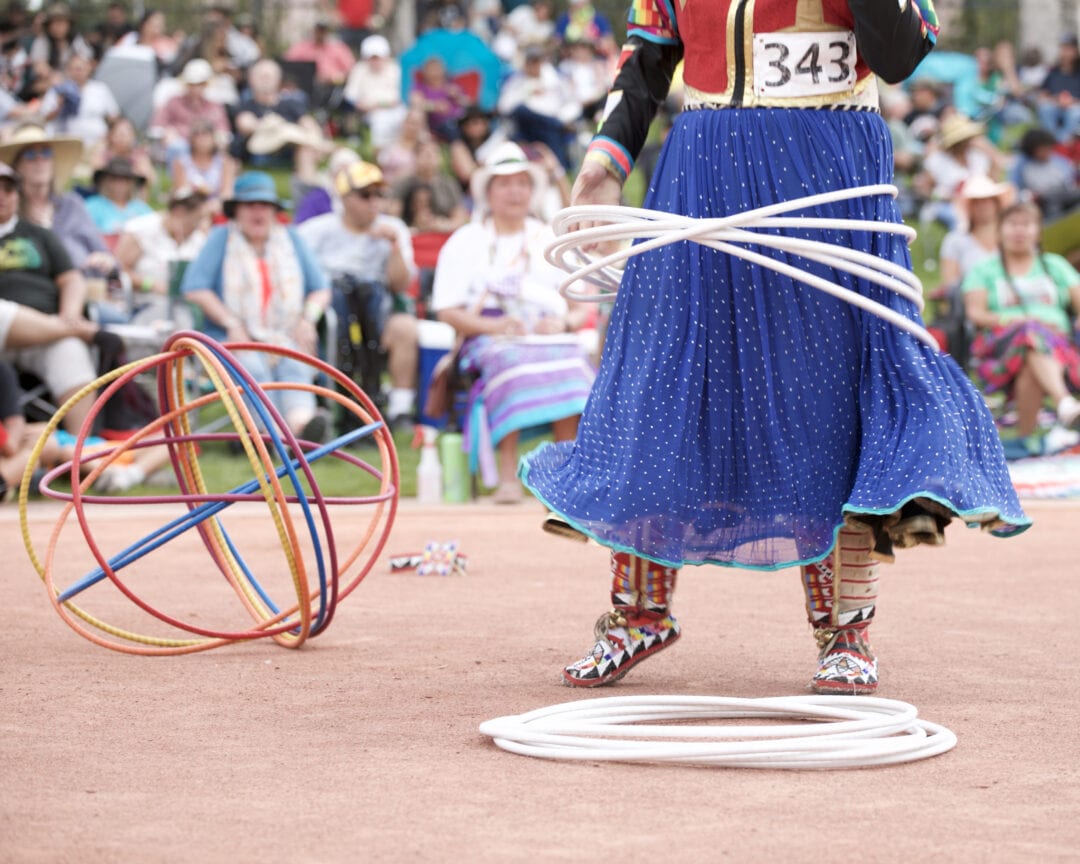
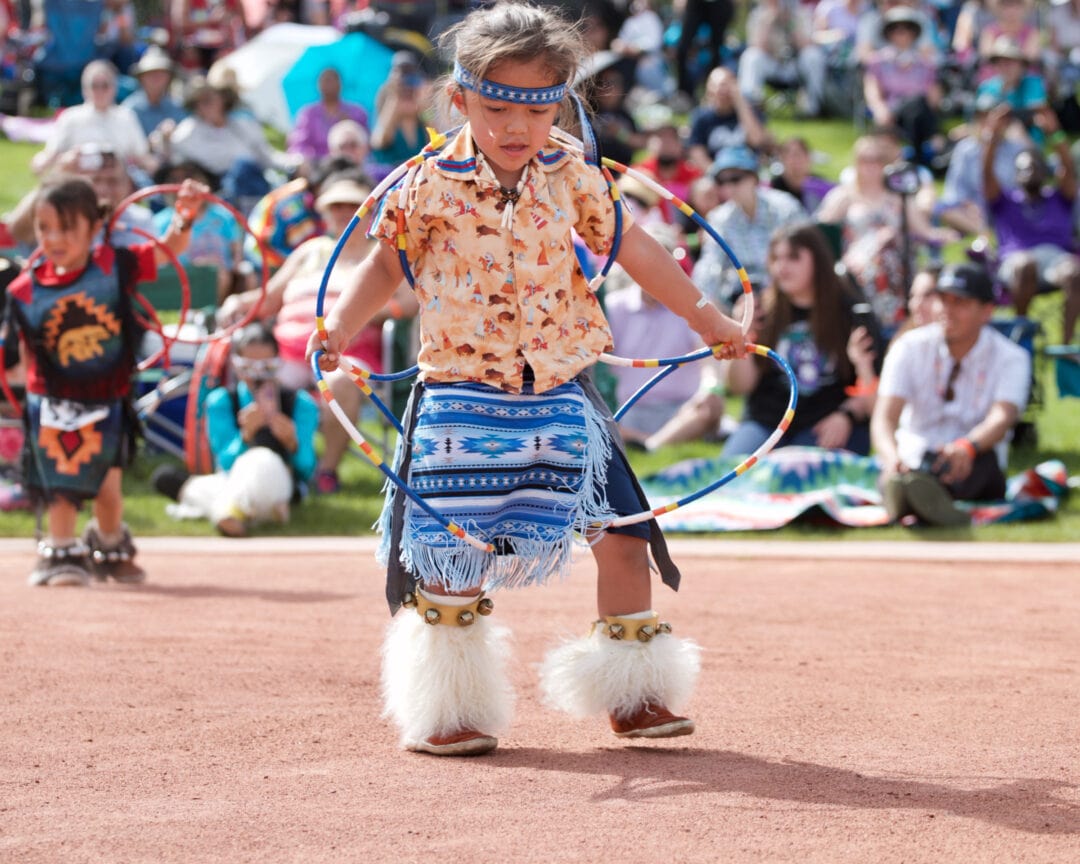
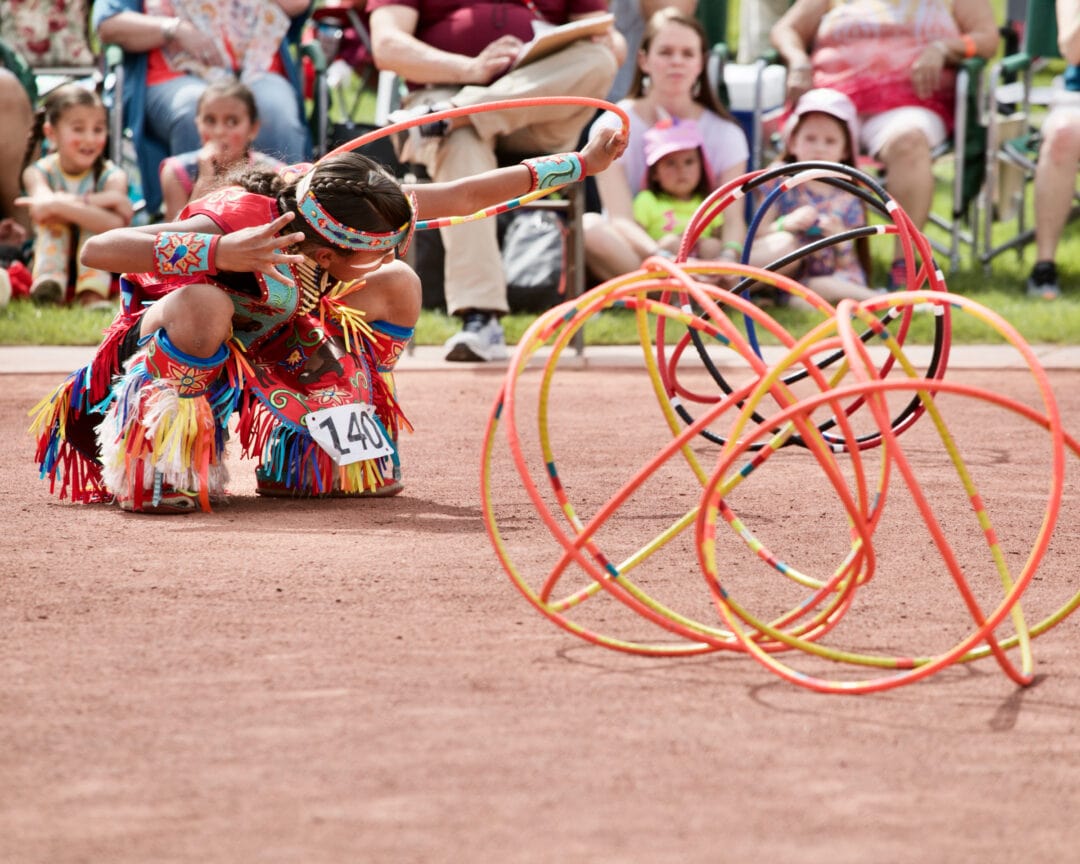
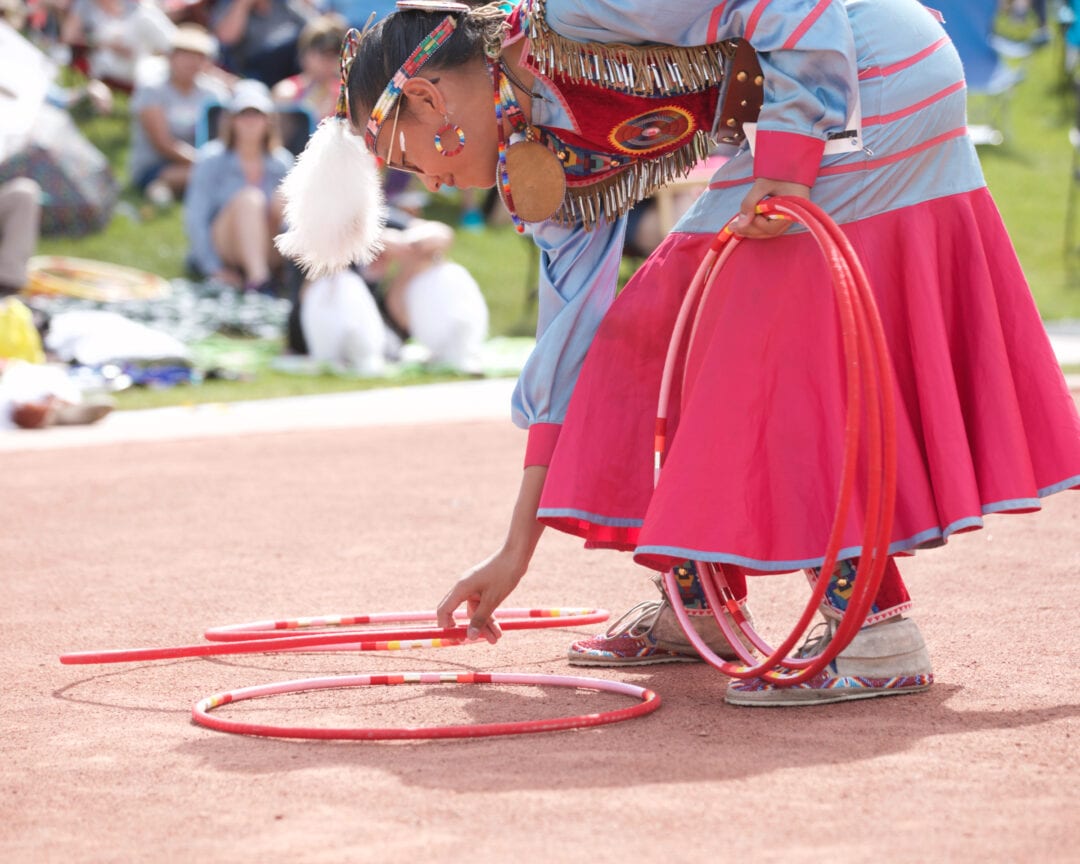
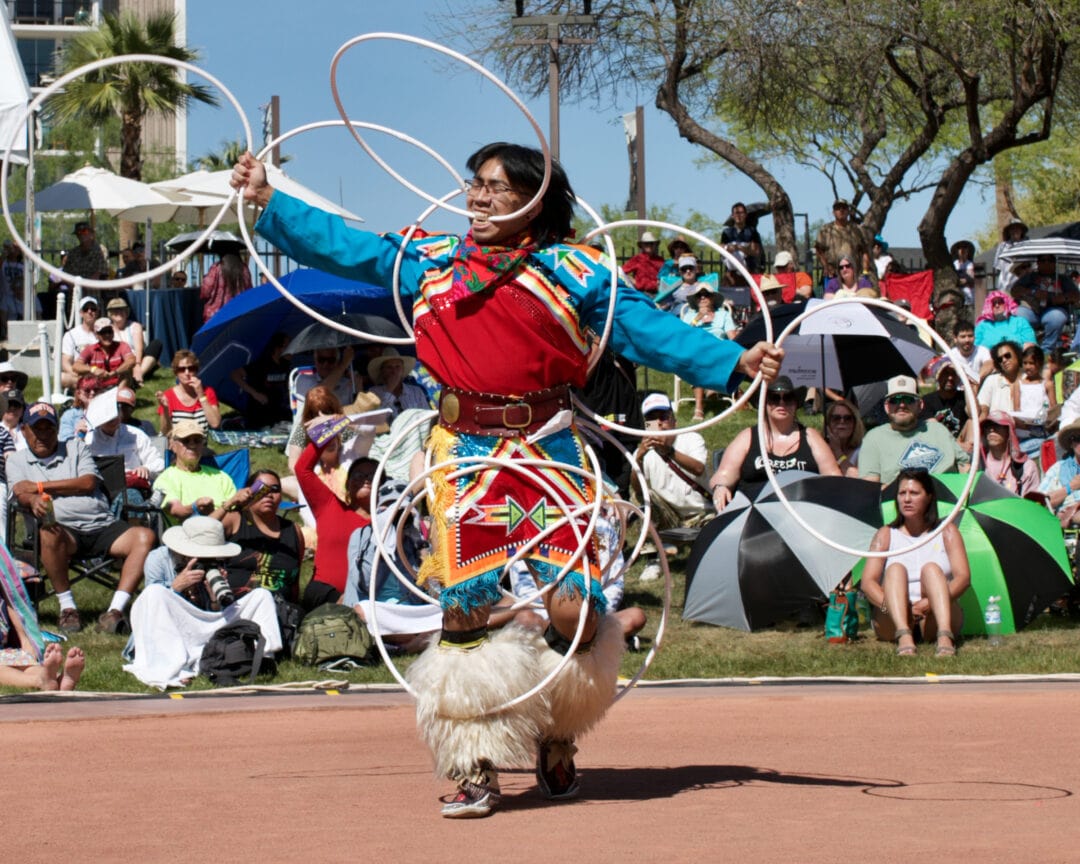
The World Championship Hoop Dance Contest starts off with the grand entry: Competitors in beautiful regalia enter the amphitheater to the rhythmic sounds of the Thunder Boy Singers and the Cozad Singers, who provide live music for the dancers.
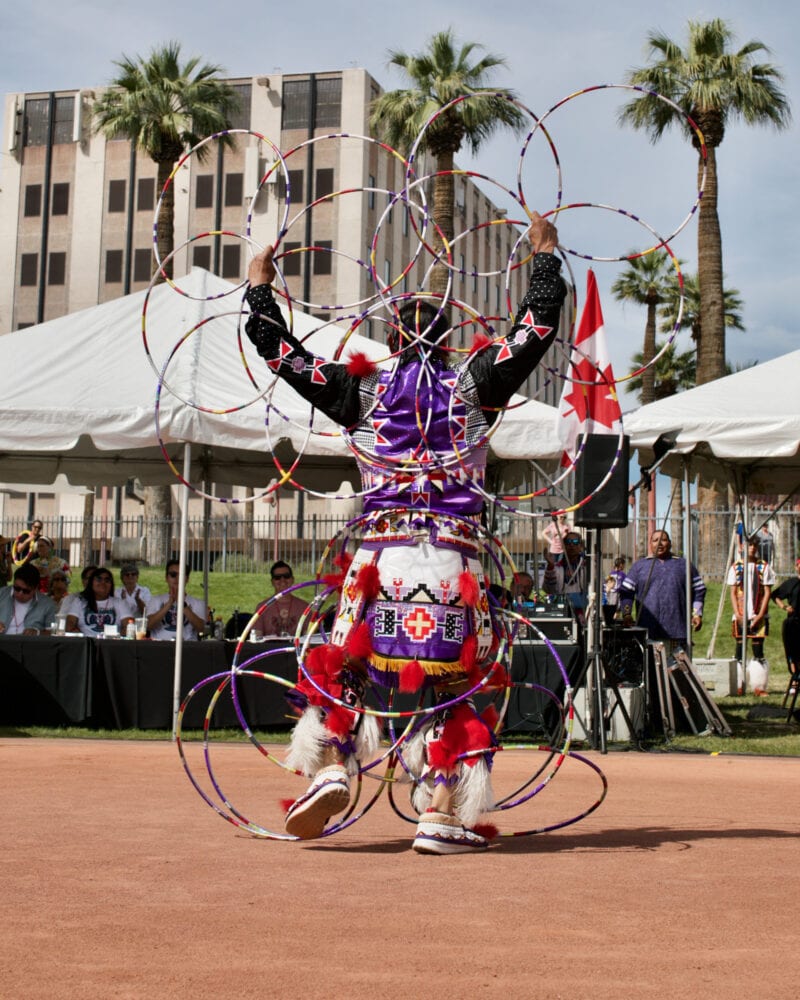
Hoop dancers of all ages come from across the U.S. and Canada to compete against each other annually at the Heard Museum. They’re judged by criteria developed by Ralph Zotigh; the 2022 panel of judges included Charlene Bomberry, a champion women’s traditional Pow Wow dancer, and Eddie Swimmer, the first official World Champion Hoop Dancer.
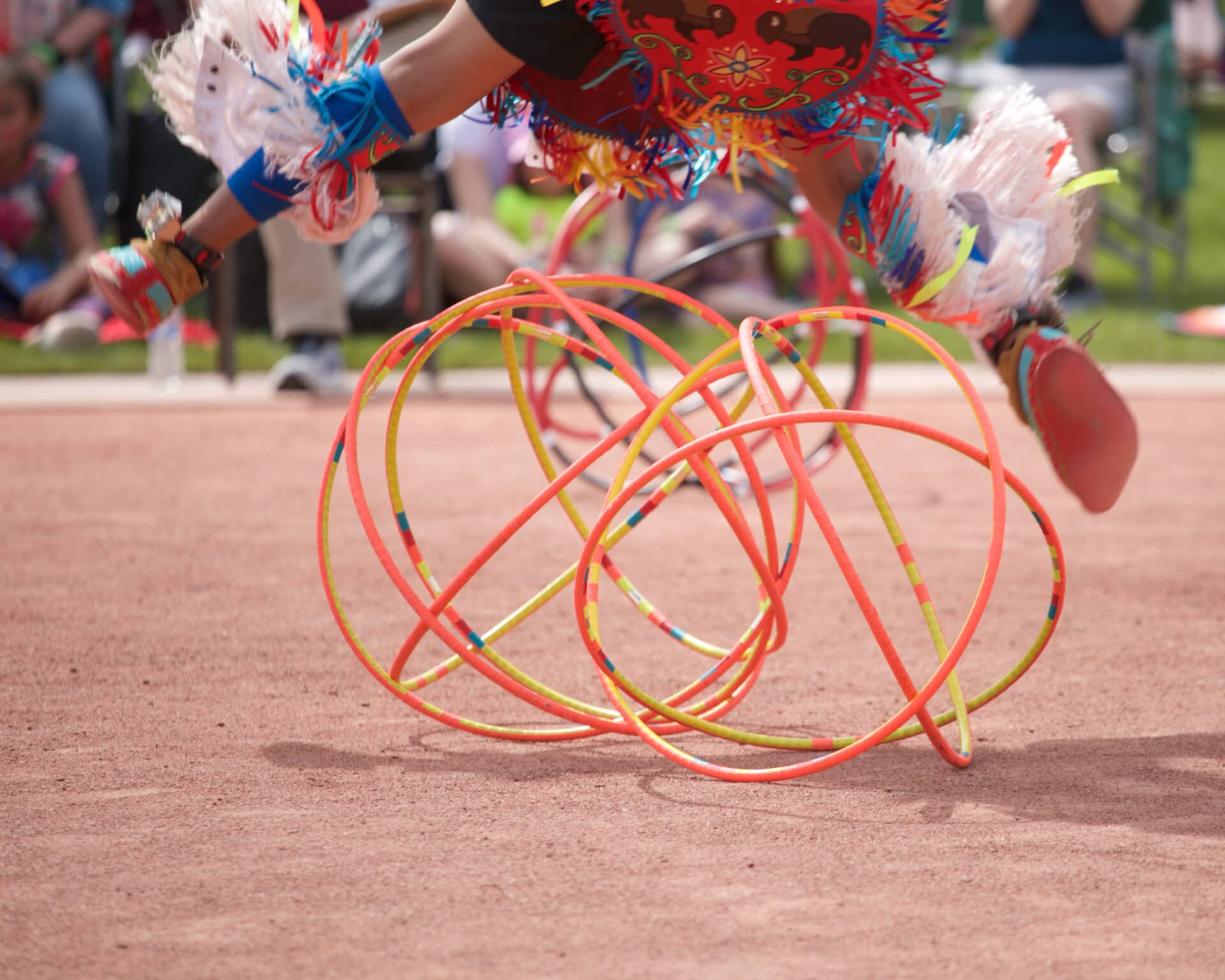
Hoop dancers must pass through every hoop, move with the drumbeat, and end in time with the music. They accumulate points based on the number and originality of designs, as well as the degree of difficulty and coordination required.
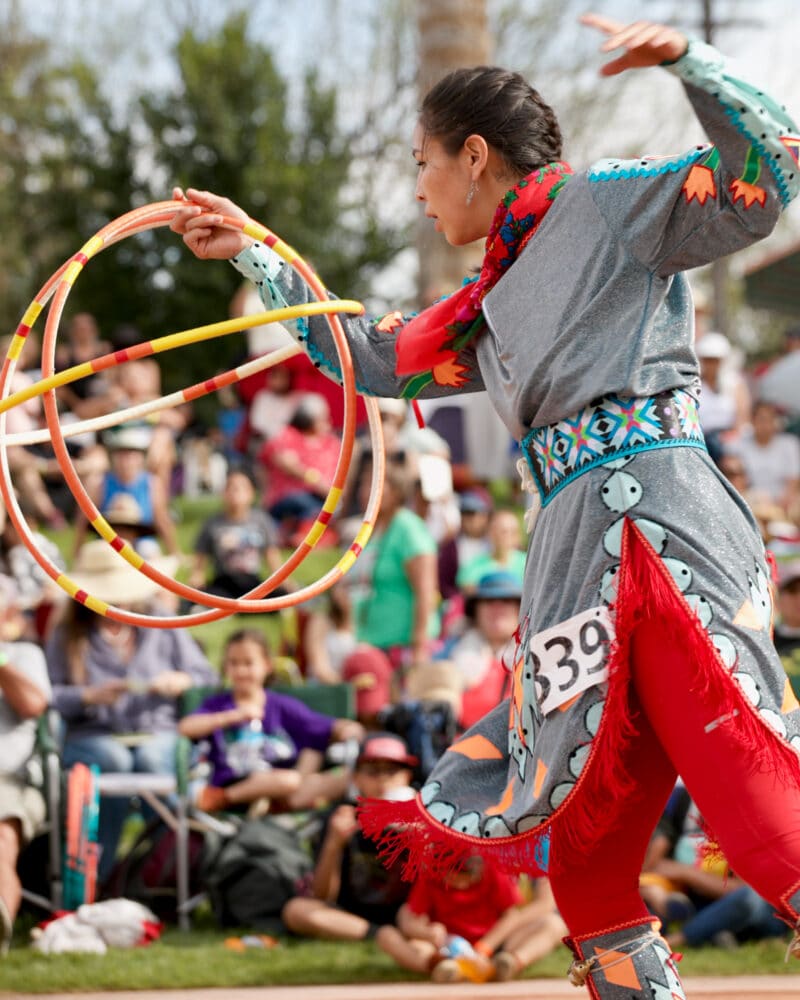
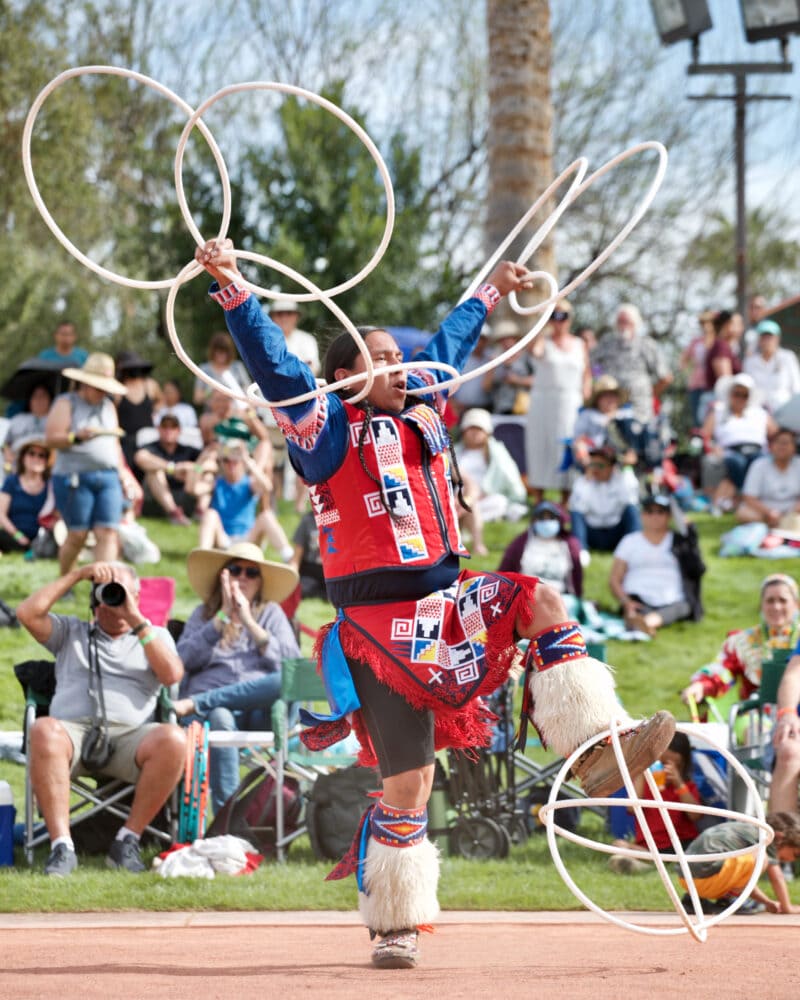
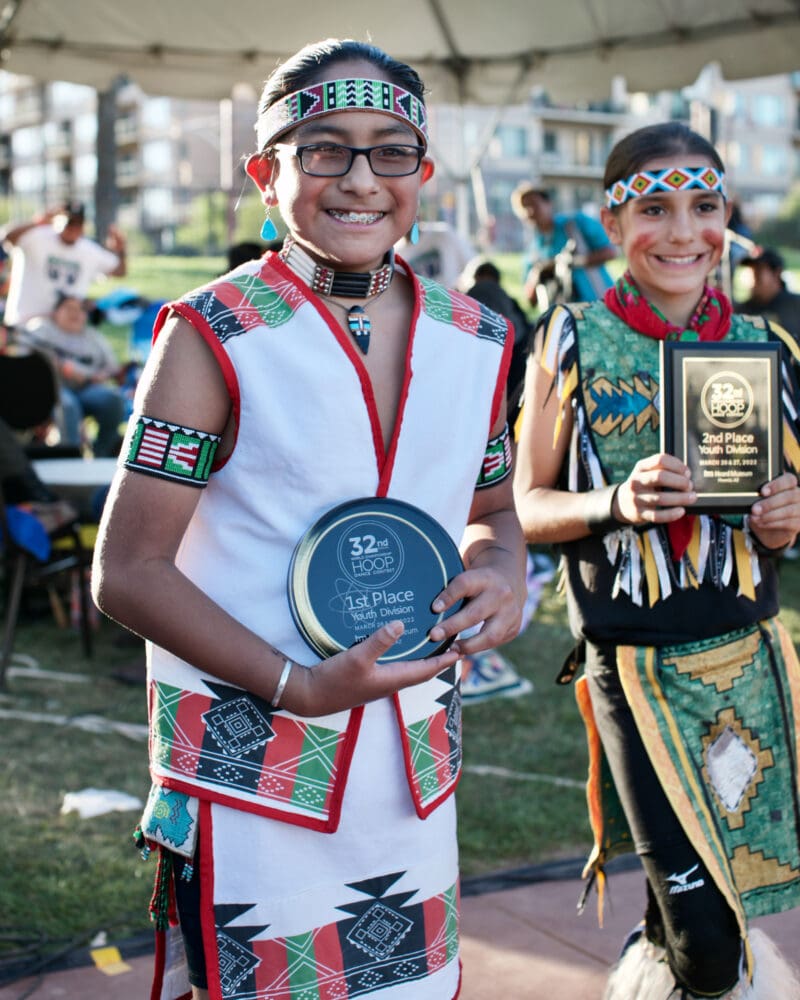
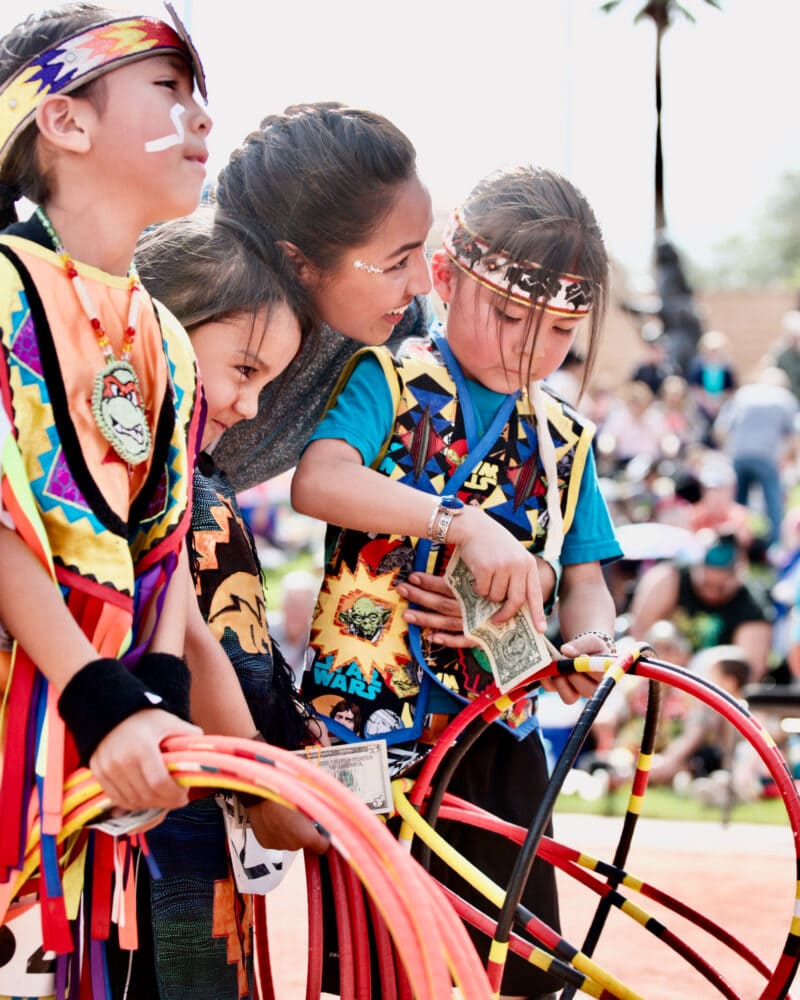
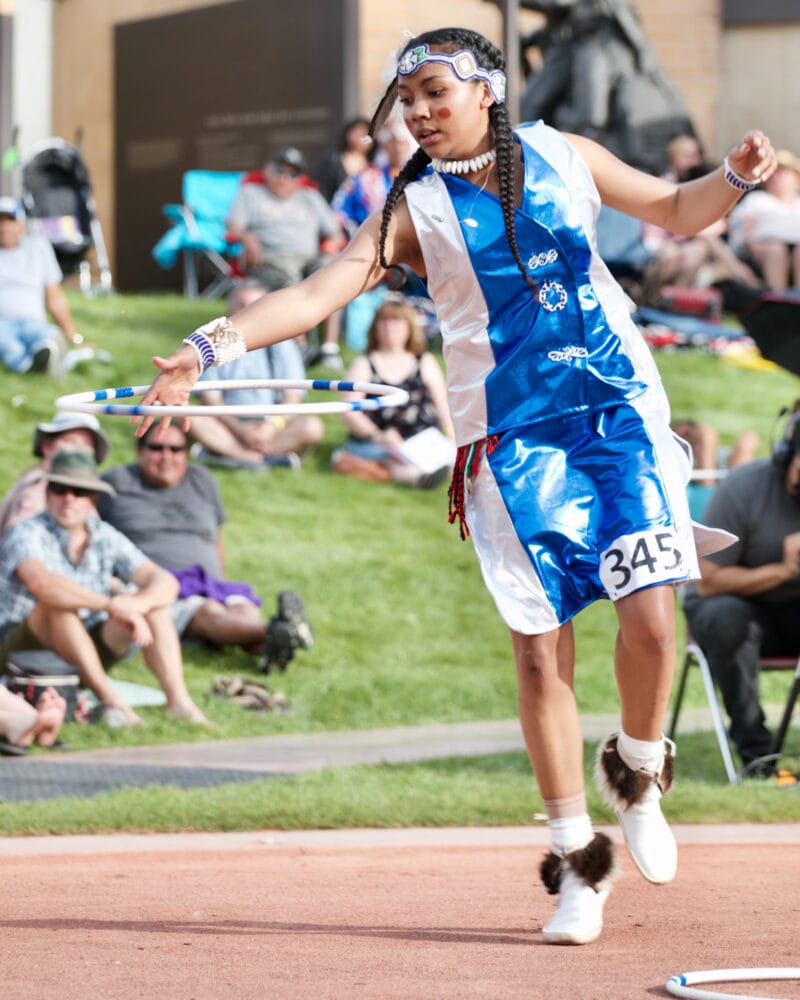
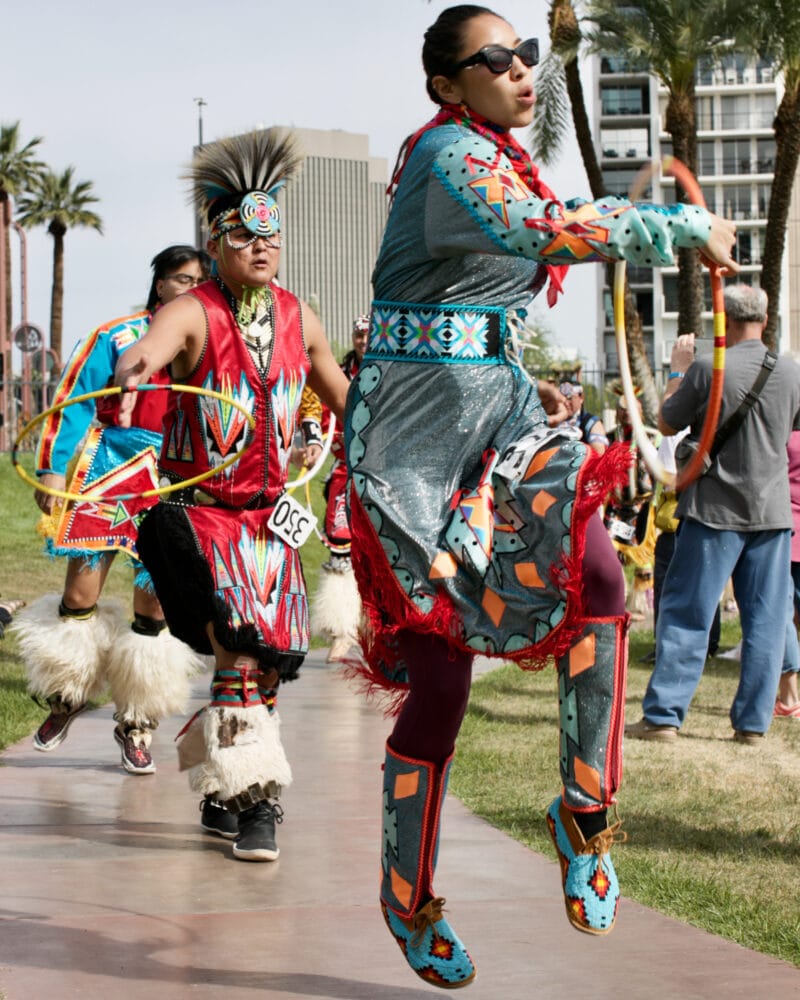
The competition spans 2 days, with four different divisions: youths (ages 6 to 12), teens (13 to 17), adults (18 to 39), and seniors (40 and older). Women and men compete side by side in each age division.
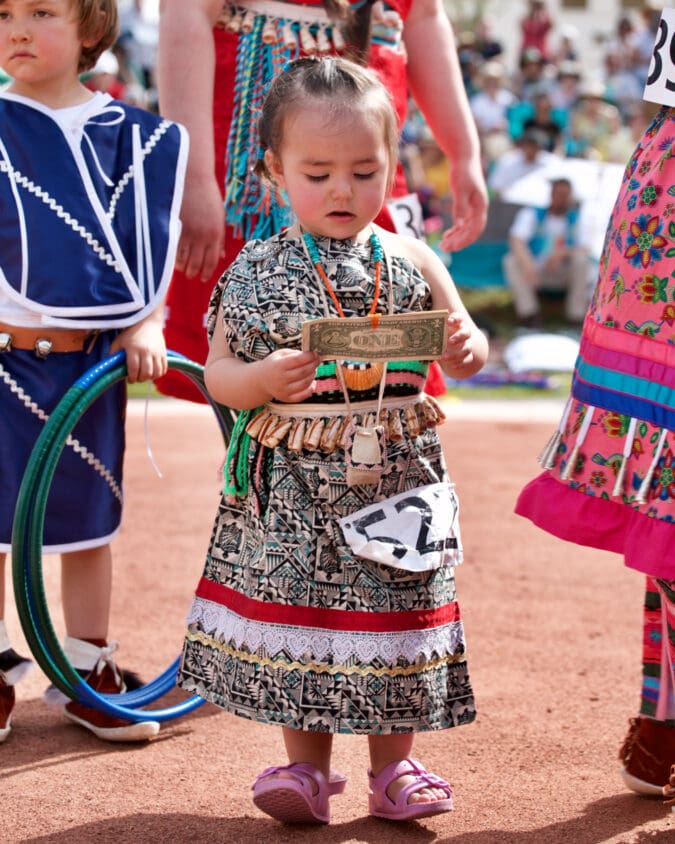
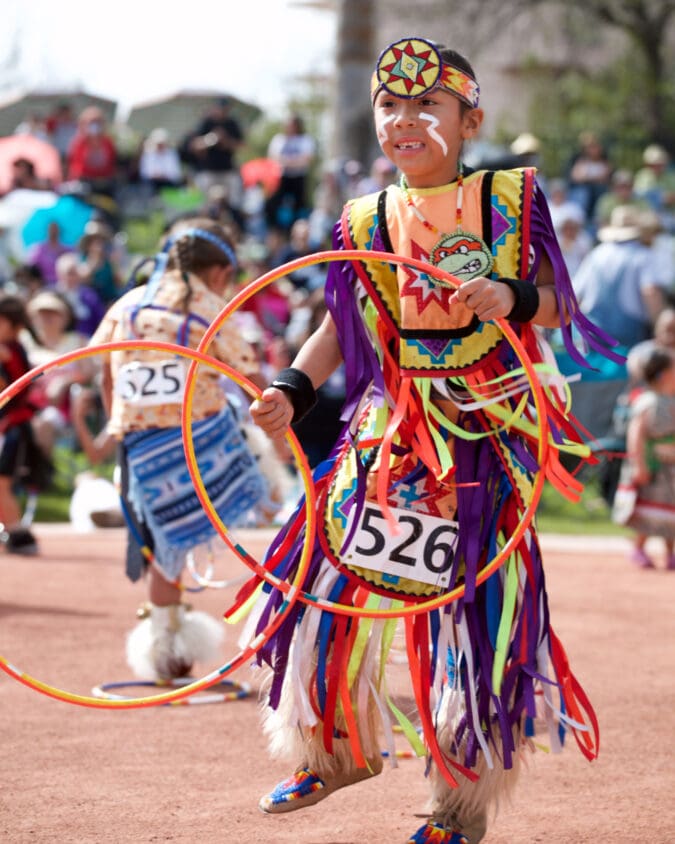
The competition begins with “tiny tots,” which includes ages 0 to 5 years. Unlike the older divisions, all eligible contestants dance simultaneously, with awards given at the end of the round.
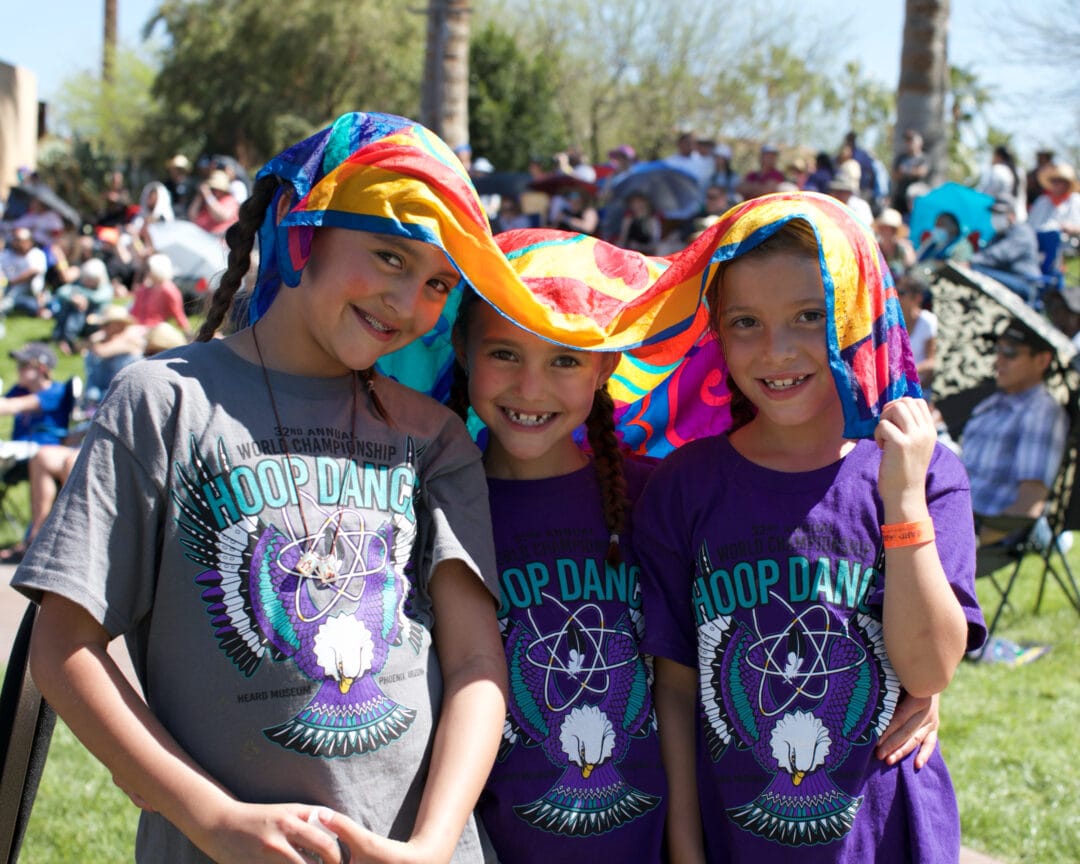
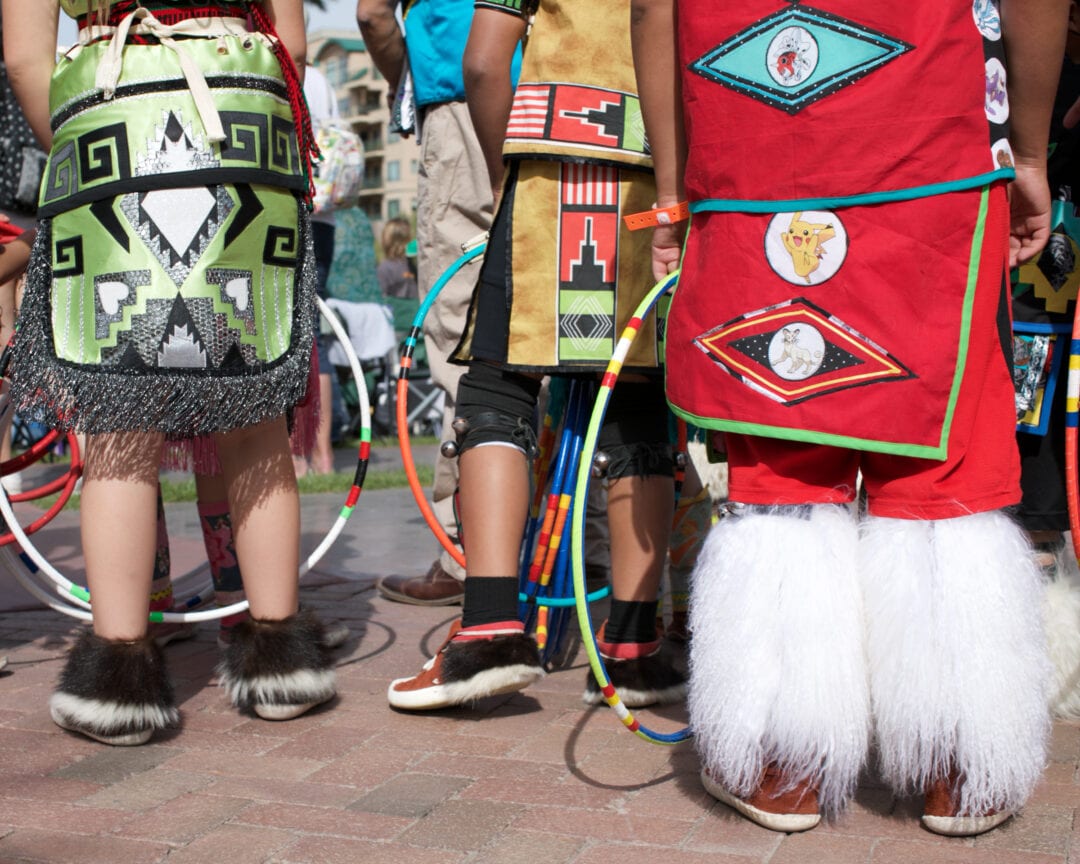
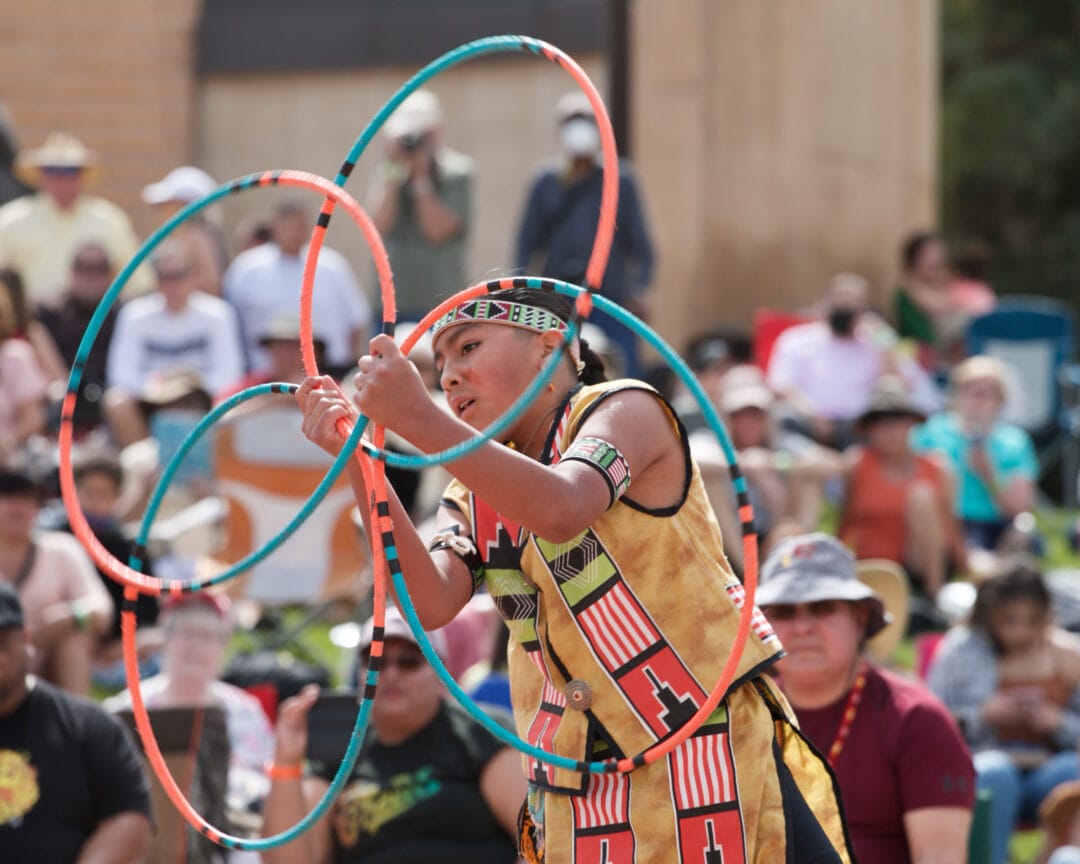
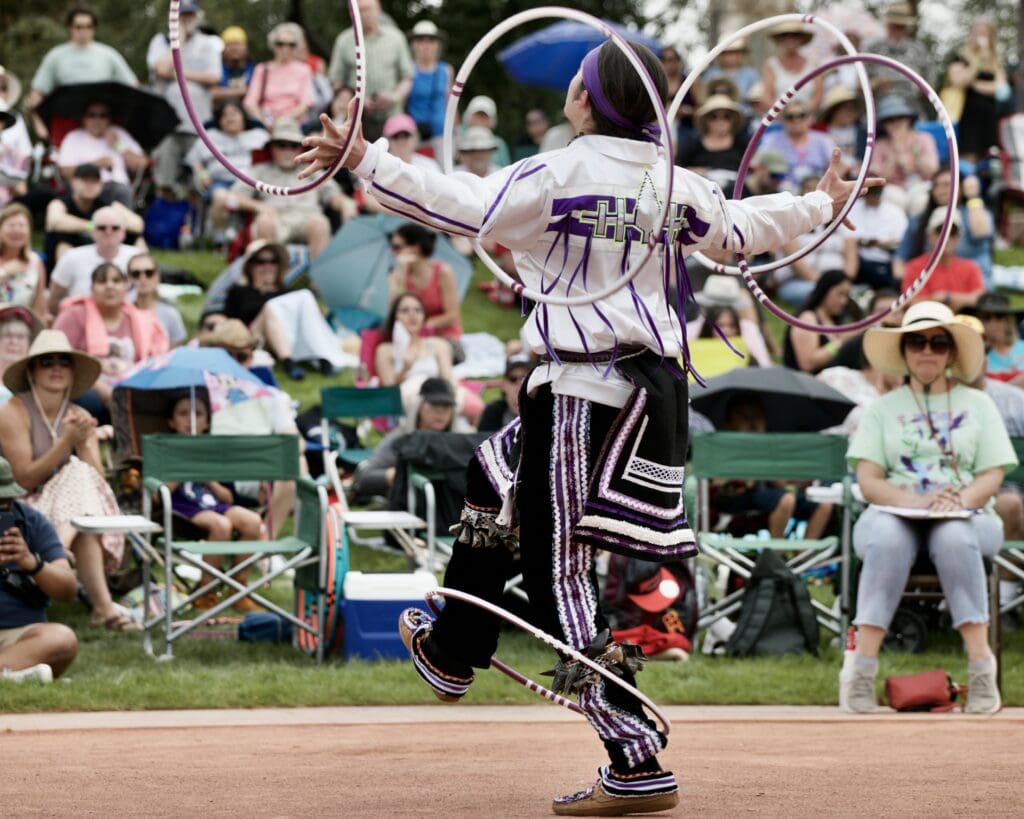
The Lightning Boy Foundation is a northern New Mexico nonprofit providing traditional hoop dance instruction and other programming to Native youth ages 2 and older. “Dedicated to nurturing and building confidence and integrity through culture and artistic expression,” the foundation was started in memory of Valentino Tzigiwhaeno Rivera, by his family in conjunction with actor, performer, and celebrated hoop dancer Nakotah LaRance and his father, Steve.
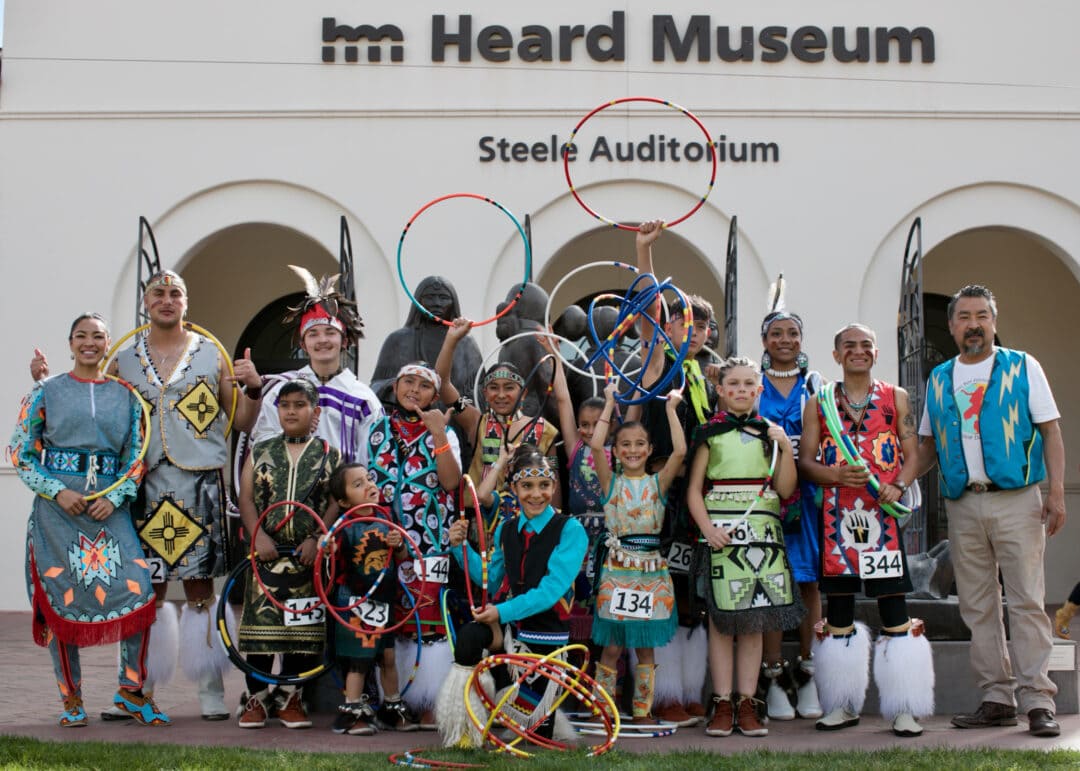
“The Lightning Boy Foundation inspires [Native youth] to gain confidence and to learn and engage with their culture,” Young says. “This teaches them that they can inspire others by sharing their dance.” In 2022, four of the 13 Lightning Boy hoop dancers placed in the World Championship Hoop Dance Contest.
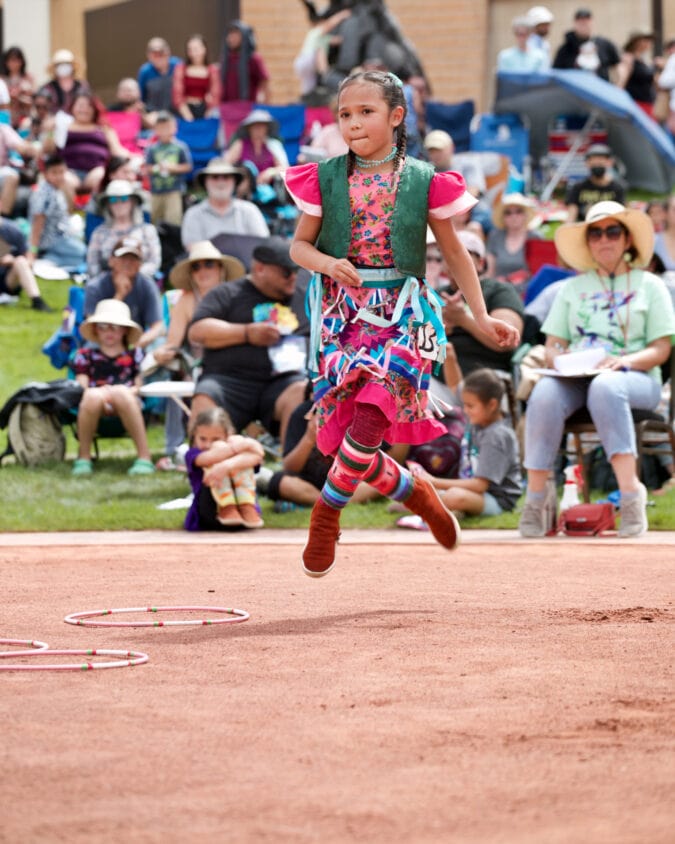
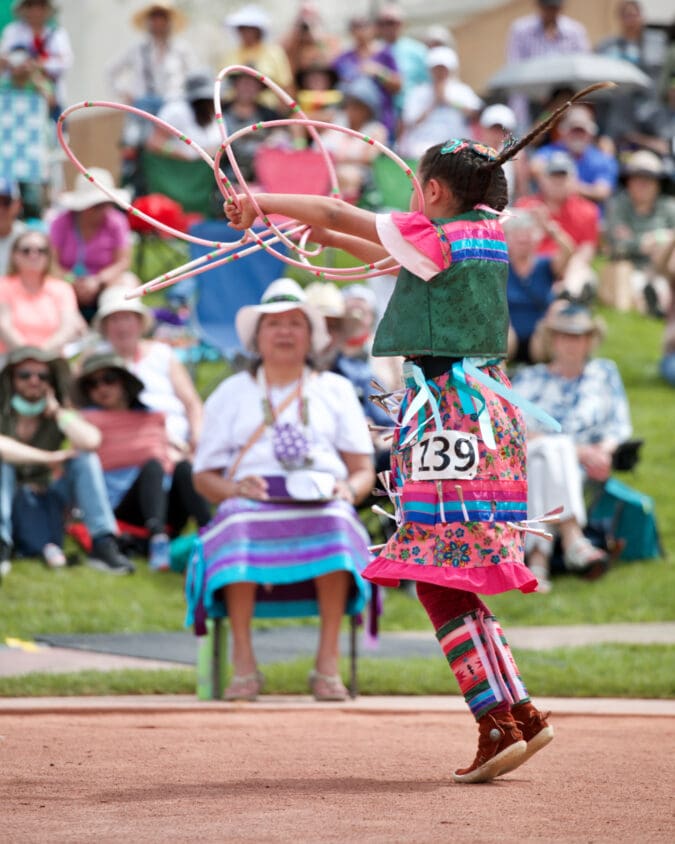
Although she didn’t intend to at the time, Sykes Torres paved the way for other female competitors, including her own daughter, Shikeyah (Navajo/Mexican), who danced in the Youth Division in 2022. Although dancing and politics have their obvious differences, Sykes Torres says that both pursuits have helped her feel more connected to her culture. “I did [hoop dancing] because I was interested in it,” she says. “But now that I have a daughter, I see how important it is for her to see other female hoop dancers out there doing it.”
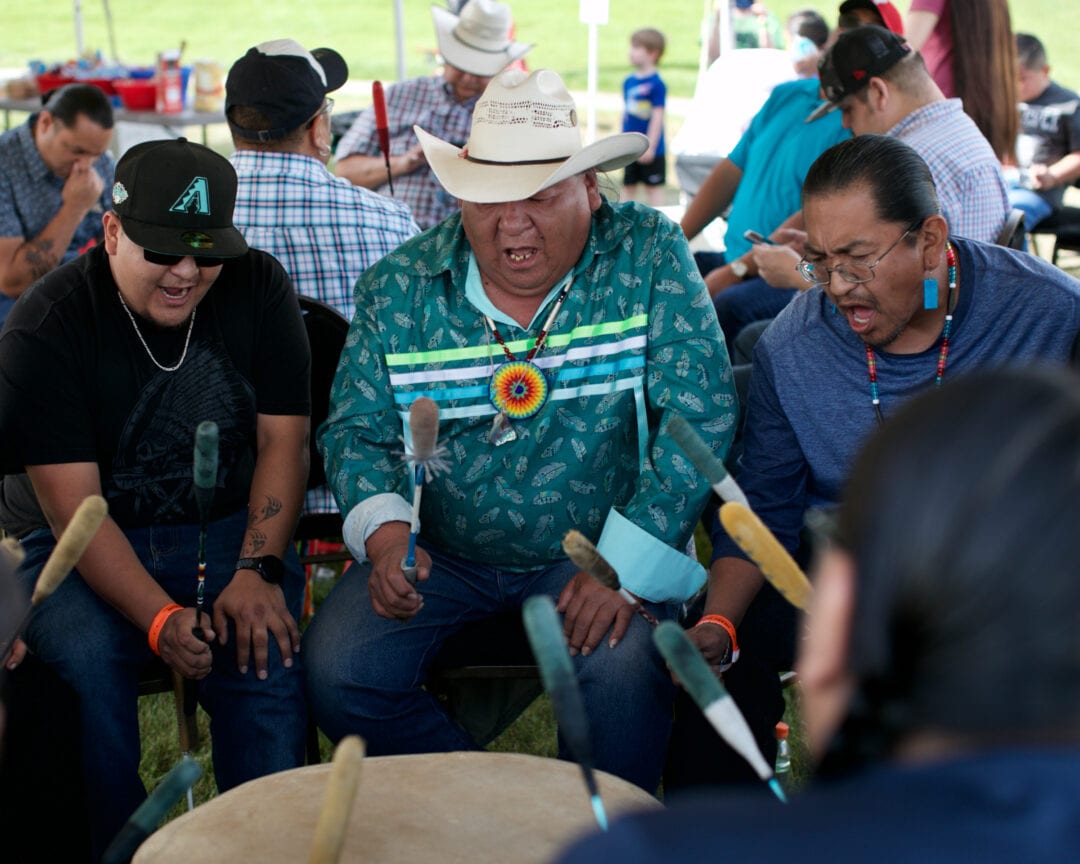
Thunder Boy Singers provide some of the amazing music that the dancers use to keep their rhythm. Dancers are judged in part by whether they can keep timing and coordination with the rapid drum beat. Head singer Ryon Polequaptewa (Hopi) says, “With the songs that are created [for the competition] we hope to bring a positive energy, prayer, and balance to the universe.”


